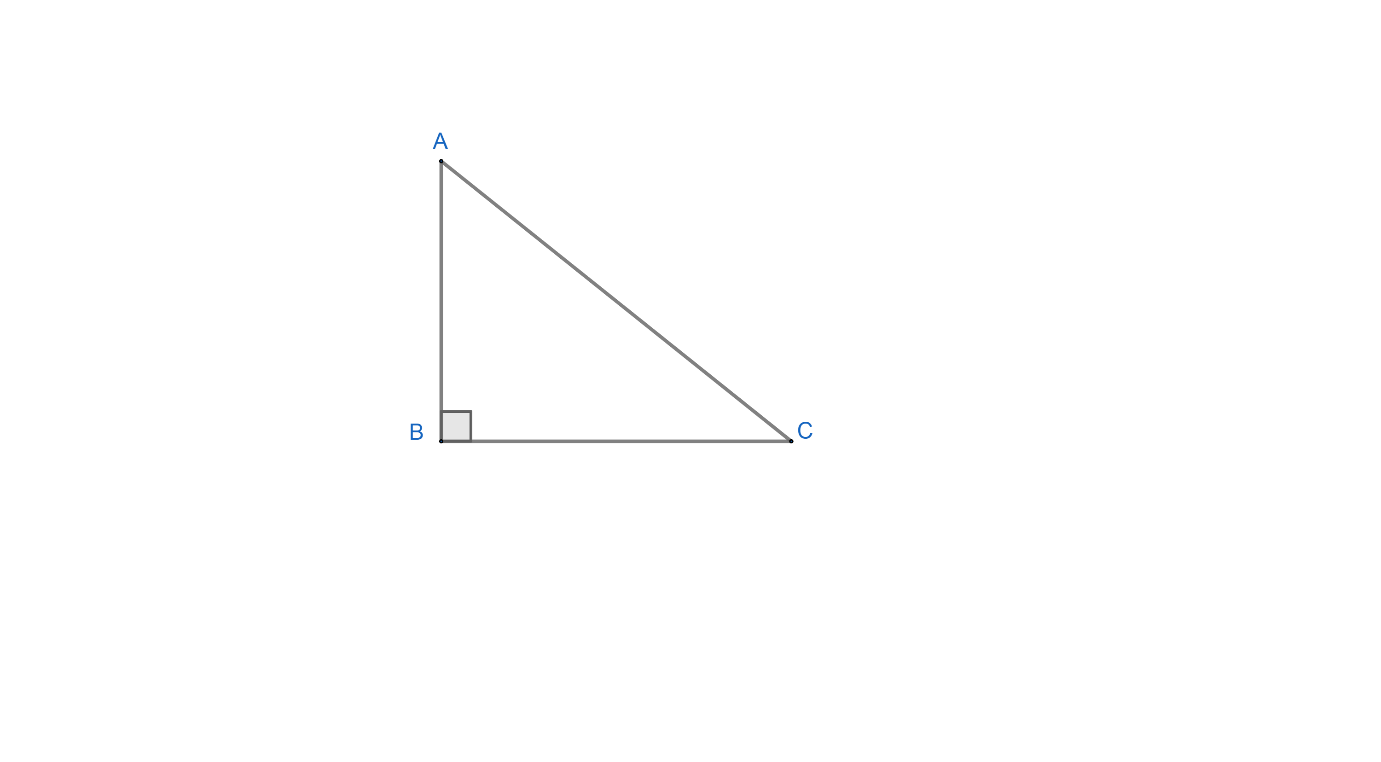
If height of a cone is h, its slant height is l, then radius of its base will be,
A. $\sqrt{l+h}$
B. $\sqrt{l-h}$
C. $\sqrt{{{h}^{2}}-{{l}^{2}}}$
D. $\sqrt{{{l}^{2}}-{{h}^{2}}}$
Answer
594k+ views
Hint: We will first start by drawing a rough sketch of the cone and then mark all its dimensions as given to us. Then we will apply the Pythagoras Theorem in the right angle formed by the slant height of the cone to find the radius.
Complete step-by-step answer:
Now, we have been given a cone with height h and slant height l. Now, we let the radius of the cone be r.

Now, we have in $\Delta OAB, \angle OAB=90{}^\circ $. Therefore, the triangle is a right angle triangle.
Now, we that according to the Pythagoras Theorem in a right angle triangle ABC as,

$A{{B}^{2}}+B{{C}^{2}}=A{{C}^{2}}$
Similarly, in $\Delta OAB$ we have,
$O{{B}^{2}}=O{{A}^{2}}+A{{B}^{2}}$
Now, we have $OB=l,\ OA=h,\ AB=radius$. So, using this we will find the value of radius as,
\[\begin{align}
& {{l}^{2}}={{h}^{2}}+A{{B}^{2}} \\
& A{{B}^{2}}={{l}^{2}}-{{h}^{2}} \\
& AB=\pm \sqrt{{{l}^{2}}-{{h}^{2}}} \\
\end{align}\]
Now, since the radius of a cone is a positive quantity. Therefore, we have,
$\begin{align}
& AB=\sqrt{{{l}^{2}}-{{h}^{2}}} \\
& r=\sqrt{{{l}^{2}}-{{h}^{2}}} \\
\end{align}$
Hence, the correct option is (D).
Note: It is important to note that we have rejected $r=-\sqrt{{{l}^{2}}-{{h}^{2}}}$ because the radius of a cone cannot be negative, it has to be a positive quantity only. Therefore, we have rejected the negative value and accepted the positive value only.
Complete step-by-step answer:
Now, we have been given a cone with height h and slant height l. Now, we let the radius of the cone be r.

Now, we have in $\Delta OAB, \angle OAB=90{}^\circ $. Therefore, the triangle is a right angle triangle.
Now, we that according to the Pythagoras Theorem in a right angle triangle ABC as,

$A{{B}^{2}}+B{{C}^{2}}=A{{C}^{2}}$
Similarly, in $\Delta OAB$ we have,
$O{{B}^{2}}=O{{A}^{2}}+A{{B}^{2}}$
Now, we have $OB=l,\ OA=h,\ AB=radius$. So, using this we will find the value of radius as,
\[\begin{align}
& {{l}^{2}}={{h}^{2}}+A{{B}^{2}} \\
& A{{B}^{2}}={{l}^{2}}-{{h}^{2}} \\
& AB=\pm \sqrt{{{l}^{2}}-{{h}^{2}}} \\
\end{align}\]
Now, since the radius of a cone is a positive quantity. Therefore, we have,
$\begin{align}
& AB=\sqrt{{{l}^{2}}-{{h}^{2}}} \\
& r=\sqrt{{{l}^{2}}-{{h}^{2}}} \\
\end{align}$
Hence, the correct option is (D).
Note: It is important to note that we have rejected $r=-\sqrt{{{l}^{2}}-{{h}^{2}}}$ because the radius of a cone cannot be negative, it has to be a positive quantity only. Therefore, we have rejected the negative value and accepted the positive value only.
Recently Updated Pages
Master Class 10 General Knowledge: Engaging Questions & Answers for Success

Master Class 10 Science: Engaging Questions & Answers for Success

Master Class 10 Social Science: Engaging Questions & Answers for Success

Master Class 10 Maths: Engaging Questions & Answers for Success

Master Class 10 English: Engaging Questions & Answers for Success

Master Class 10 Computer Science: Engaging Questions & Answers for Success

Trending doubts
The shortest day of the year in India

Why is there a time difference of about 5 hours between class 10 social science CBSE

Write a letter to the principal requesting him to grant class 10 english CBSE

What is the median of the first 10 natural numbers class 10 maths CBSE

The Equation xxx + 2 is Satisfied when x is Equal to Class 10 Maths

State and prove converse of BPT Basic Proportionality class 10 maths CBSE




